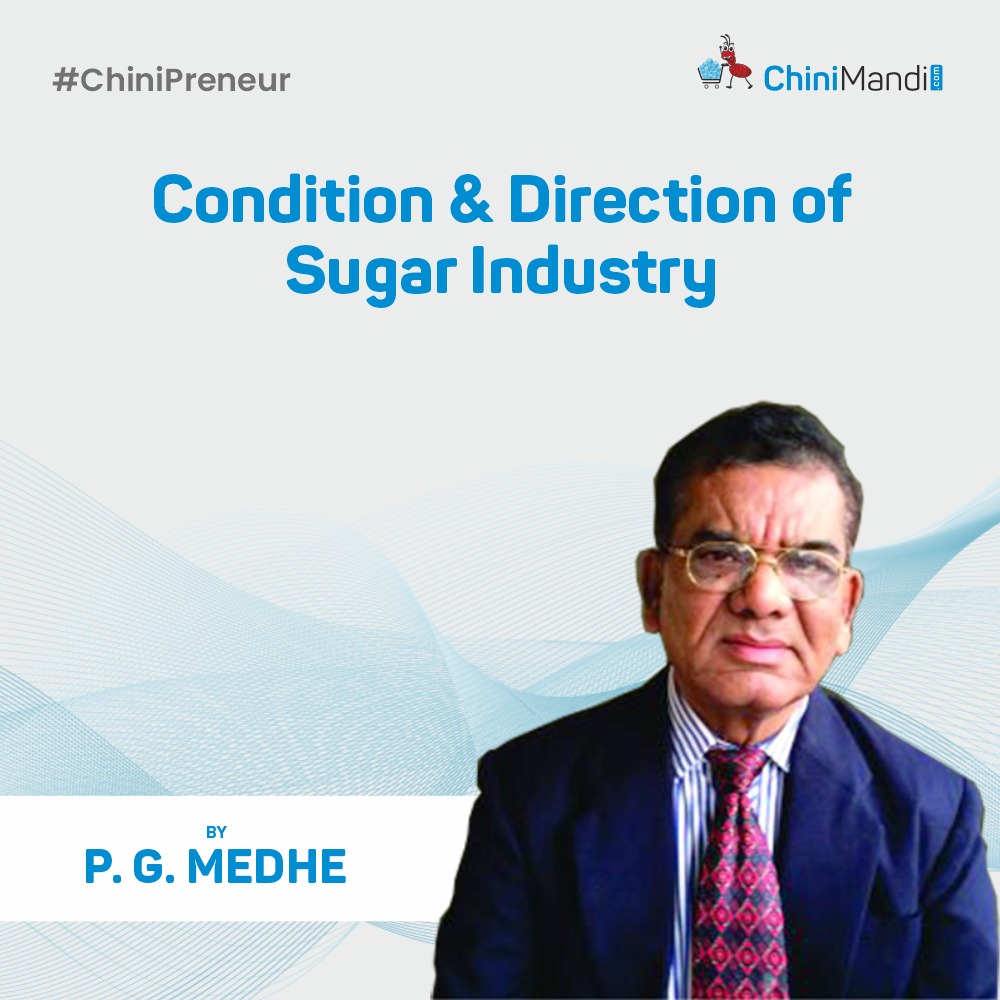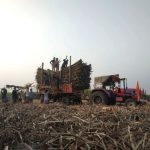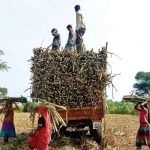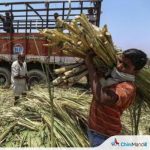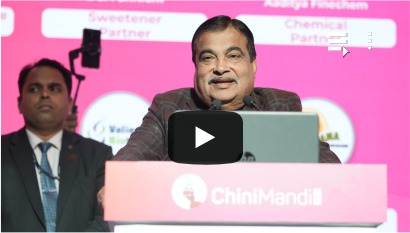In an era defined by climate urgency, resource scarcity, and rural economic distress, India’s sugar industry stands on the brink of a transformative breakthrough. Moving beyond its traditional identity as a sugar-producing sector, it now envisions becoming a critical player in clean energy, rural development, and national energy security. This evolution is encapsulated in a singular vision: “New Energy, New Future”.
The Next-Gen Sugar Complex is not just an industrial upgrade—it is a paradigm shift. By integrating sugar production with biofuels, bio-CNG, green power, and high-value biochemicals, supported by digital technologies and sustainable practices, this model redefines the purpose and power of the sugar sector. It transforms a traditional sugar mill into a Rural Bio-Energy & Agro-Industrial Hub—a driver of India’s green and inclusive growth.
1. From Sugar Mills to Bio-Energy Complexes
Historically, sugar mills focused on a single product—crystalline sugar—with molasses and bagasse treated as low-value by-products. This linear model limited revenue, increased environmental burden, and made mills overly dependent on sugar price cycles.
The Next-Gen Complex, however, is built on circular economy principles:
>Cane to Crystals, Ethanol, and CNG
>Bagasse to Steam and Green Electricity
>Spent Wash to Bio-Manure and Biogas
>Condensate Recovery and Zero Liquid Discharge
>It maximizes resource efficiency while diversifying income streams and minimizing carbon footprints.
2. Components of the Next-Gen Sugar Complex
i. Bioethanol Plant (1G & 2G)
>Molasses-based, grain-based, and cane juice/syrup-based ethanol
>Integrated with Praj’s or Alfa Laval’s high-efficiency distillation technologies
>Supports India’s Ethanol Blending Programme (20% by 2025)
ii. Green Power Cogeneration
Bagasse-fired high-pressure boilers,
Efficient turbines for captive and grid export
Can reduce rural electrification gaps
iii. Compressed Bio-Gas (CBG)
>Anaerobic digestion of press mud and spent wash
>Output for vehicle fuel, industrial use, or gas grid
>By-product: enriched bio-manure for cane fields
iv. High-Value Co-Products
>Fusel oil, rectified spirit (RS), Extra Neutral Alcohol (ENA)
.>Potash, bio-fertilizers, and nutraceuticals from by-products
>Carbon credits and RECs (Renewable Energy Certificates)
v. Digital & Smart Automation
>AI-driven process controls and yield optimization
>IoT-based energy and water monitoring
>Blockchain for cane procurement traceability
3. Sustainability & Climate Benefits
The next-gen complex supports India’s Panchamrit Goals:
>Reduces GHG emissions via ethanol & CBG use
>Promotes zero liquid discharge with condensate polishing
>Enhances water-use efficiency via drip-irrigated cane
>Creates carbon-negative zones in rural India
Example Impact (per 1 Lakh litres/day ethanol plant):
-CO₂ emission reduction: ~60,000 tons/year
-Diesel replacement: ~30 million litres/year
-Water reuse: >90% through condensate and recycling
4. Economic & Social Upliftment
The model offers:
>Better cane prices via value-added co-products
>Stable cash flows for mills despite sugar price cycles
>Local employment: Skilled, semi-skilled, and digital jobs
>New revenue for farmers: Straw, grain, and syrup procurement
>It enables the “Wealth from Waste” model—turning agricultural residues into valuable bioenergy.
5. Maharashtra’s Leadership Opportunity
As India’s largest cane-producing state, Maharashtra is uniquely placed to:
>Convert 150+ sugar mills into integrated complexes
>Use surplus molasses, cane syrup, and grains
>Deploy modular plug-and-play bio-refinery technologies
>Create Sugarcane Energy Zones in high-yield districts
>The state can emerge as the Bio-Energy Capital of India, aligning with the PM’s vision of “Atmanirbhar Bharat” and “Green Growth”.
6. Policy Enablers and Recommendations
.>To support this transition:
Implement Dual Sugar Pricing: ₹40/kg (domestic), ₹60/kg (industrial use)
>Expand Ethanol Purchase Commitments: Long-term OMC tie-ups
>Ease Financial Approvals: Fast-track loans for ethanol/CBG plants
>Subsidise Digitalisation: Encourage smart sensors, AI, and SCADA
>Additionally, an Incentive Scheme for Farmer-Owned Bio-Products (₹1000/MT) can directly link farmer prosperity with clean energy generation.
7. Vision 2047: India’s Green Sugar Economy By 2047, India’s sugar industry can:
+Contribute 30% to India’s ethanol needs
+Replace 10 billion litres of fossil fuels/year
+Create 5 lakh+ rural green jobs
+Sequester over 50 million tonnes of CO₂/year
This future is not just aspirational—it is achievable through integrated planning, technology infusion, and policy support.
8. Consolidated Farming at Village Level:
>Foundation for a Sustainable Sugar Economy
India’s sugar industry is deeply intertwined with its farming structure. Today, over 70% of cane farmers cultivate on less than 2 acres of fragmented land—an outcome of successive generations splitting joint family land holdings. This fragmentation severely hinders:
>Mechanised farming
*Adoption of high-yield varieties
*Scientific input management
*Economies of scale
Without structural reform in the way farming is organised, even the best industrial advancements in distilleries and energy parks will be constrained by weak agricultural productivity.
Why Consolidated Farming is the Need of the Hour?
>Enables Mechanization: Laser levelling, trench planting, harvesters, and fertigation units require larger contiguous land blocks.
>Boosts Yields: Consolidation can help raise productivity from the current 65–70 MT/Ha to 110–125 MT/Ha, especially with high-yield varieties like Co-86032, Co-265, Co-11015 and many more.
>Reduces Costs: Shared drip irrigation systems, fertiliser inputs, and drone-based pest control become viable. Saving in water and power.
>Builds Farmer Co-operatives: Local self-help groups or farmer producer companies (FPCs) can lead collective negotiation, storage, and procurement.
Proposed Model: “Village-Level Agro Clusters”
~Villages are organized into 10–20 farmer groups per cluster Each cluster aggregates 50–100 Ha of land
~Managed under a joint farming agreement or lease-to-cooperative model
~Linked digitally with mills for cane monitoring, input supply, and payment traceability
Strategic Benefits for Industry & Nation:
>Higher cane productivity = More feedstock for ethanol and CBG units
>Lower per-liter cost of ethanol production =
>Better EBP economics
>Enhanced farmer incomes = Stakeholder stability for the sugar ecosystem
>Improved land & water use efficiency = Climate-smart agriculture
POLICY RECOMMENDATIONS :
The government and sugar cooperatives should pilot “Village Consolidation Zones” with incentives such as:
>Capital subsidies for mechanized equipment shared among farmers
>Crop insurance schemes tailored for joint farm holdings
>Digital land aggregation platforms to manage shared cultivation transparently
.>Integration with Next-Gen Sugar Complex Vision
Consolidated farming is the agricultural backbone of the Next-Gen Sugar Complex. While distilleries, cogeneration, and bio-CNG plants represent the processing frontier, it is the field-level productivity that feeds the machine. Without better productivity per hectare, the feedstock for the Ethanol Blending Programme (EBP), power generation, and CBG production will always fall short.
Thus, “New Energy, New Future” must begin not in factories—but in consolidated, technology-driven sugarcane fields.
A New Dawn for Sugar Sector “ NEW ENERGY, NEW FUTURE “ is more than a slogan-it is a call to action. The sugar sector’s reinvention into energy, bio economy and climate solutions provider is a strategic national imperative. The Next-Gen Sugar Complex can become the nuclear of this change-reviving rural economies, greening the grid and empowering India’s march towards self-reliance and sustainability.
“The time for incremental reform is over. The time for bold transformation has begun. ”
P.G. Medhe is the former Managing Director of Shri Chhatrapati Rajaram Sahakari Sakhar Karkhana Ltd and sugar industry analyst. He can be contacted at +91 9822329898.

